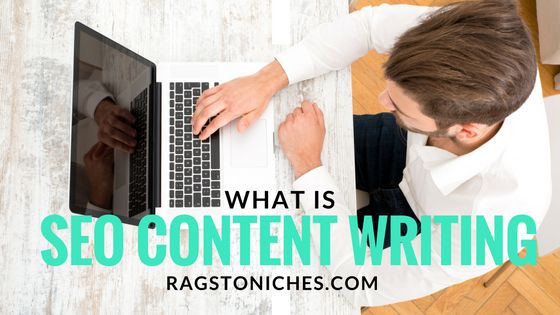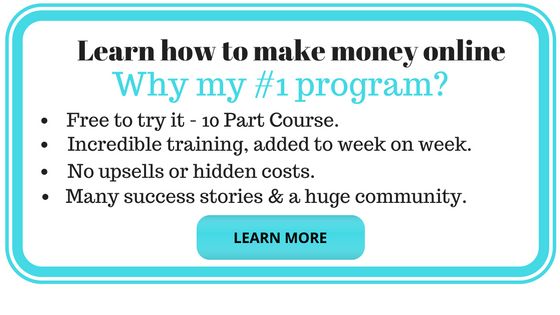 What is SEO content writing – what is SEO and What is content?
What is SEO content writing – what is SEO and What is content?
Well, content relates to any information that is put out there on the world wide web.
In the case of this article, the term “content” will relate to your articles or blog posts/pages on your website – this is YOUR content.
So, optimizing your content for the search engines appropriately, (SEO) will help you towards the aim of ranking highly within the big search engines, such as; Google and Bing.
The higher up you are found in the search engines, the more people can find and read your content and… that’s what we want, right?
But how do you optimize your content for the search engines?
Well, for starters, you need to be targeting a specific subject area for your content- or more specifically, you need to target keywords related to what you want to write about.
What Are Keywords?
When it comes to SEO content writing, keywords are pretty much your starting point.
“Keywords” just refer to the exact words or phrases that a person will type into the search engines when they’re looking for something.
For example, say someone has a problem that their dog keeps jumping up on people – perhaps they will search something like… “dog training tips,” or “how to stop your dog jumping up.”
SEO writers need to include their keyword exactly as it would have been written in the search, the exception to this is when keywords don’t make sense or are grammatically incorrect.
You’d need to use the grammatically correct version of the keyword – sometimes writers have purposefully targeted keywords that are written incorrectly – however, this not only looks unprofessional, Google is now catching on to this.
Google has advanced to the stage it often now suggests the correct answer to people right away or simply searches for what it THINKS you meant to type.
Alternatively, sometimes by adding punctuation to a potentially incorrect keyword, can correct it. Google usually bypasses punctuation, so this makes it possible to do.
In addition, words such as “as, in, of, a and on” are normally ignored too, so if another one makes considerably more sense – you could substitute it.
If you’re writing within a competitive field, you’ll also want to be targeting low-competition keywords. This will give you a better chance of ranking highly.
You can use keyword tools to find low-competition keywords. My personal favourite is Jaaxy, which I use on a daily basis, (you can sign up to 30 free searches with Jaaxy here). Alternatively, you can use the Google keyword planner.
So, the idea is to be able to target a keyword with the most potential traffic, but with the least competition.
A lower competition keyword will generally be a longer phrase, so you just need to experiment.
Keyword Volume And Placement
Many SEO writers will aim for keywords to be visible in their written content at a volume of between 3-7%… although, due to the potential threat of being penalised for keyword stuffing, I’d err on the side of caution here!
Your targeted keyword needs to be…
- In the page title. You need to add to the page title specifically and ideally the first words within it.
- Ensure your heading is a H1 tag, people searching will generally expect the title will also the heading of your article once they click through.
- The keyword should also be in the first paragraph of your text, some say adding it towards the end will help too – but it needs to look natural.
- The keyword should be in the URL
Keywords and Images
Images can show up in the Google search too and, naturally, if people click on yours then this will bring more traffic to your website.
With this in mind, the alt text, title and filename also have ranking ability.
You could add your prime keyword to your first initial image in the alt text, for example – but do not go overboard.
As with keyword stuffing in general, this applies to images too and should be avoided and if you’re adding your keyword to the alt text, it should be relevant to that image and make sense.
In general, the alt text should describe what the image is of – if it’s a product, the product should be named, if it’s an activity – then that should be described and so on.
In addition, if you’re using an image as a link, the alt text is treated much the same as anchor text in a text link – so, if your picture links to an article on e.g. “keyword research” then the alt text in your image should also correspond to this.
SEO Content Writing Tips
- Write a list of potential article topics, then go ahead and do your keyword research to find potentially great titles. You want to make sure that people are searching for the keyword you want to target.
- Content on a website needs to be clear to understand, large blocks of text is not easy to read, break up large paragraphs with spaces, add lists and bullet points
- Ideally provide internal links to other relevant posts or pages on your website.
- Additionally, consider linking to other relevant authority sites, as it’s been suggested this can also help your ranking, if Google perceives you’re providing helpful value to your audience.
- Check the loading speed of your website, a low running page will lead to more people leaving your site before they’ve even read your content!
- Add images, graphs or info graphics! Anything visual that adds relevant aesthetic appeal – don’t just have an article full of text and nothing else, or your article will feel more like a chore.
- Add keywords to your meta title and meta description. Your meta title and description can influence how your main title and description appears in the search, (it does not ALWAYS happen, but is always worth doing). As such, add your prime keyword to both and add a catchy description to hook your reader. You can also tweak your meta title/descriptions at any time and try A/B testing to see which titles convert best.
- Your content should be optimized for social sharing. Make sure you have clear social sharing buttons available – since interaction and social sharing also carry valuable weight ranking wise, your content needs to be social-sharing-friendly!
Remember, It’s Not All About SEO Content…
The SEO specifics of content writing are not the only factors that will determine how well your post will rank in the search engines.
Other factors may include also, the word count, how popular your site is, how much social engagement it receives, how many comments your content gets, the age and authority of your domain and so forth.
Simply writing a 300 word SEO optimized article on a 2 page website, with zero social engagement and no domain authority, for example; is not going to miraculously rank highly.
This is just one piece of the puzzle, but certainly a piece worth paying attention to.
Just always keep in mind… you’re writing for people first and foremost, not Google!
I hope I roughly summed up for you there how to optimize your content for the search engines – how do you approach writing content for your website?
Let me know in the comments!
I hope you found this article useful – I appreciate any shares via the icons below! Cheers guys!
All the best…


I did not realise their was so much thought that needs to go into a good article. Your guide has been most helpful. How do you suggest the best method of getting social engagement is.
Hi thank you – follow people relevant to your niche and comment on their own content, build up relationships and they will be more likely to share yours. I’m still trying to tackle social media at the moment to be honest, it’s not my strong point. 🙂